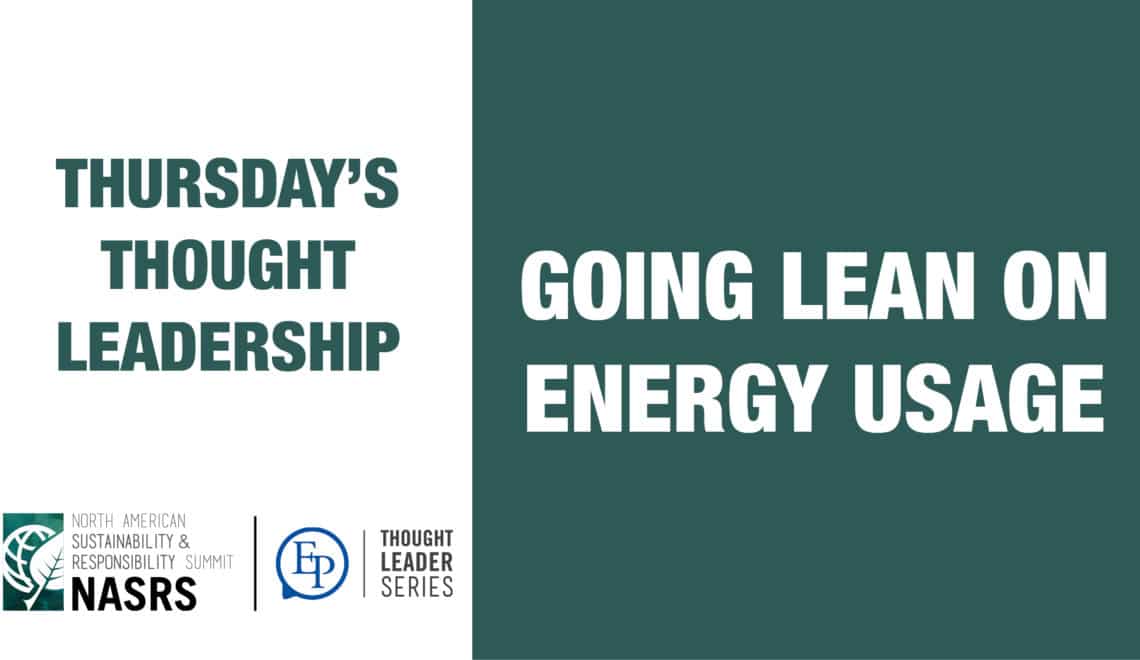
Almost a decade ago now, ADM, one of the largest food processing companies in the world, decided to get serious about its electricity consumption. With hundreds of factories, crop procurement collection points, and supply chain infrastructure facilities globally, it was an enormous task. A decision was made to treat the project in the same way manufacturers bring lean principles to their operations: Find the low-hanging fruit first; identify and eliminate waste and improve efficiencies in a series of easy wins and quick victories that convince people positive change can be achieved; encourage input from all levels of the workforce to build a culture of continuous improvement; translate local innovations into company-wide best practices.
The results were incredible. By reinvesting savings back into further energy efficiencies, it became self-funding. The big ticket items that had required too much upfront capital in the beginning were paid for by the early victories, which then funded still further reinvestment. ADM hit its target of creating more than $150 million in annual energy savings four years ahead of the original plan, and the green initiatives continue to live on to this day.
Here are a few questions to ask yourself about your business:
- One example of early wins from ADM’s story is rethinking its thousands of pumps, fans, and generators. Buildings designed decades ago were overengineered to maximize uptime and build in future capacity expansions, but advances in technology as well as years of data on what the facility really needs allows decision-makers to upgrade and replace large numbers of older less efficient and maintenance intensive equipment with fewer new units that perform better and are at the beginning of their lifecycle without negatively impacting productivity. Regardless of what your business does, think about how its operations were originally conceived: Where were unnecessary extras built into your processes years ago before anyone ever thought about energy usage as wasteful?
- Energy efficiency is something you can build into your corporate culture in just the same way Lean thinking can be embraced from the boardroom to the shop floor, but it will require a leader who is prepared to make going green their top priority. Who is the right person to bring Lean processes to energy usage in your company? What will that person need in terms of time and resources to succeed in that new responsibility?
- Can you connect what you are doing to the bottom line? One of the great engines of positive change at ADM was the money saved by reducing energy usage was reinvested back into further green initiatives which then produced an even bigger ROI. At the start of your project, figure out your metrics and how you can collect the information you need to track progress from the very beginning. A self-funding, self-perpetuating energy efficiency program with an ambitious goal and steady progress reports is an easy sell to senior leadership, so have a clear understanding of how you plan to move forward from the very start of your program.
- Lean manufacturing has a culture of sharing and cross-pollinating ideas that work between Lean thinkers. If and when you launch your energy efficiency campaign, who can you connect with in other organizations on similar journeys?
—

Geoff Micks
Head of Content & Research
Executive Platforms
Geoff joined the industry events business as a conference producer in 2010 after four years working in print media. He has researched, planned, organized, run, and contributed to more than a hundred events across North America and Europe for senior leaders, with special emphasis on the energy, mining, manufacturing, maintenance, supply chain, human resources, pharmaceutical, food and beverage, finance, and sustainability sectors. As part of his role as Head of Content & Research, Geoff hosts Executive Platforms’ bluEPrint Podcast series as well as a weekly blog focusing on issues relevant to Executive Platforms’ network of business leaders.
Geoff is the author of five works of historical fiction: Inca, Zulu, Beginning, Middle, and End. The New York Times and National Public Radio have interviewed him about his writing, and he wrote and narrated an animated short for Vice Media that appeared on HBO. He has a BA Honours with High Distinction from the University of Toronto specializing Journalism with a Double Minor in History and Classical Studies, as well as Diploma in Journalism from Centennial College.











